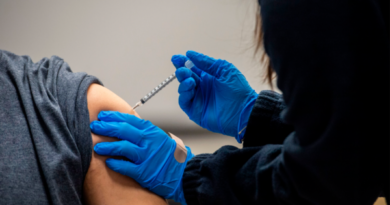Breathing exercises may lessen Alzheimer’s risk 2023
Inhale and exhale for five counts. 20 minutes, twice a day, for four weeks.
These brief breathing sessions enhanced heart rate variability and lowered blood amyloid-beta peptide levels after four weeks.
Mara Mather’s study found that. The study, published last month in Scientific Reports, may be the first to show that breathing exercises can lower amyloid beta levels in humans, young and old.
Breathing impacts heart rate, which affects nervous system and brain protein production and removal. We use our sympathetic nervous system when awake. This “fight or flight” system helps us exercise, focus, and create lasting memories. The sympathetic nervous system stabilizes heartbeat intervals. Parasympathetic activation raises heart rates during inhalation and lowers them during exhalation.
Young or fit people quickly switch between the sympathetic and parasympathetic nerve systems. The parasympathetic nerve system, known as the “rest and digest” system, helps us relax, digest meals, and sleep. These activities increase heartbeat variation.
Scientists are finding that as people age, our parasympathetic nerve system access—and heart rate variation—decreases considerably.
A 2020 smart watch study indicated that heart rate variability declines 80% between 20 and 60. This may explain why we sleep less as we age.
“We know the sympathetic and parasympathetic systems influence the production and clearance of Alzheimer’s related peptides and proteins,” said Mather, who runs the Leonard Davis School of Gerontology’s Emotion & Cognition Lab. “However, there’s been very little research on how these physiological changes in aging might be contributing to the factors that make someone susceptible to Alzheimer’s disease or not.”
Mather and USC, UC Irvine, and UCLA researchers had volunteers practice 20-minute biofeedback exercises twice a day. All participants wore a cardiac monitor connected to a laptop.
Half the group was told to visualize a beach scene, walk in a park, or listen to soothing music. While meditating, participants were asked to watch their pulse rate on the laptop screen and keep it stable.

The other group was advised to breathe in time with a laptop pacer—inhaling when the square rose and exhaling when it fell. As they inhaled, their heart rates peaked, and as they exhaled, they returned to baseline. They wanted to increase breathing-induced heart rate oscillations.
Before and after four weeks of biofeedback training, researchers took blood samples. Both groups’ plasma was then tested for amyloid beta peptides.
Researchers examined amyloid beta 40 and 42.
Increased synthesis and/or impaired clearance of amyloid beta in the brain may cause Alzheimer’s disease. A meta-analysis found that healthy persons with higher blood levels of amyloid beta 40 and 42 are more likely to acquire Alzheimer’s.
In Mather and colleagues’ investigation, plasma levels of both peptides reduced in the slow-breathing group that tried to boost HRV by oscillating.
Jungwon Min, a psychology graduate student and study lead, wants to know why peptides decrease when HRV increases. Do fewer peptides exist? Because the body eliminates them better? Or a mix?
The current study suggests.
“Based on the data we have, it appears the decrease in amyloid beta is due more to decreased production,” she added. “But clearance may increase.”
Half of the study’s 108 participants were 18–30 and half were 55–80. Interventions affected plasma amyloid beta levels similarly in younger and older persons.
The study is the first to show that behavioral therapies lower plasma amyloid beta peptides. Sleep deprivation and stress raise amyloid beta levels, but behavioral therapies are harder to reduce.
“At least to date, exercise interventions have not decreased Aβ [amyloid beta] levels,” added Mather. “Regularly practicing slow-paced breathing via HRV biofeedback may be a low-cost and low-risk way to reduce plasma Aβ levels and keep them low throughout adulthood.”
Kaoru Nashiro, Hyun Joo Yoo, Shai Porat, Christine Cho, and Junxiang Wan of USC; Jeremy Rouanet, Allesandra Cadete Martini, Elizabeth Head, Daniel A. Nation, and Julian F. Thayer of UC Irvine; and Steve W. Cole of UCLA were research co-authors.


